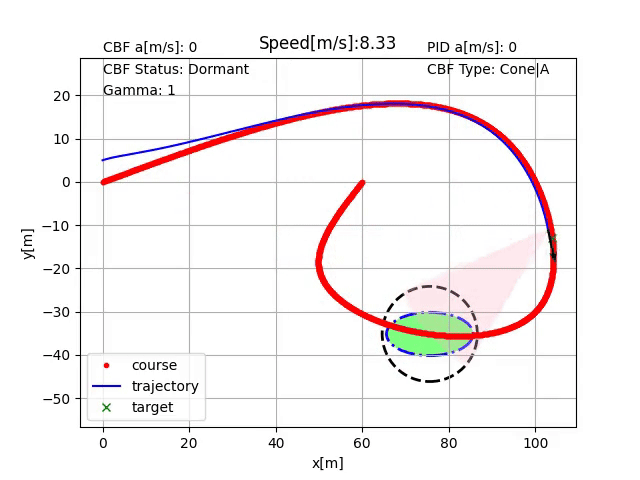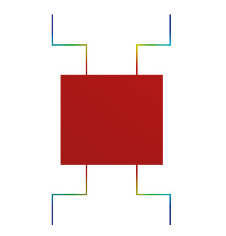Publications
2023
-
 Control Barrier Functions in UGVs for Kinematic Obstacle Avoidance: A Collision Cone ApproachT. Phani, G.G. Bhavya, T. Manan, and 6 more authorsIndian Control Conference, Oct 2023
Control Barrier Functions in UGVs for Kinematic Obstacle Avoidance: A Collision Cone ApproachT. Phani, G.G. Bhavya, T. Manan, and 6 more authorsIndian Control Conference, Oct 2023This paper introduces a new class of Control Barrier Functions (CBFs) designed for Unmanned Ground Vehicles (UGVs) to facilitate collision avoidance with kinematic obstacles, which possess non-zero velocities. While existing CBFs have proven effective in ensuring safety and collision avoidance with static obstacles, their extensions to dynamic scenarios have encountered limited success. Furthermore, applications of current CBFs with UGV models such as the unicycle or bicycle have often been conservative, lacking the ability to perform steering or thrust control in certain scenarios. Drawing inspiration from the classical use of collision cones for obstacle avoidance in trajectory planning, we propose a novel CBF formulation with theoretical safety guarantees for both the unicycle and bicycle models. The central concept involves ensuring that the obstacle’s velocity relative to the vehicle always points away from the vehicle itself. To achieve this, we establish a constraint ensuring that the velocity vector consistently avoids a cone of vectors directed towards the vehicle. The effectiveness of this new control methodology is subsequently validated through Pybullet simulations conducted on UGV platforms including TurtleBot3 and F1Tenth.
2019
-
 Analysis of Vibration based Windmill Coupled Micromachined Energy HarvesterR. Pavan, P.I. Shyamsundar, and K.P. VenkateshJournal of Vibroengineering, Nov 2019
Analysis of Vibration based Windmill Coupled Micromachined Energy HarvesterR. Pavan, P.I. Shyamsundar, and K.P. VenkateshJournal of Vibroengineering, Nov 2019The present work exploits the centripetal, Coriolis and Euler forces generated in a rotating windmill. The MEMS device is placed on the blade of a windmill to harvest the energy. Modal analysis is carried out to optimize the dimensions of the structure to match the desired conditions. The real time response of the structure and the voltage generated in the piezoelectric layer are evaluated using transient analysis. It was noticed that Euler and Coriolis forces have a significant contribution in the initial time when the wind turbine accelerates from rest. The later portion is dominated by the Coriolis and Euler forces, and in some instances they cancel out each other. However, there is always a steady contribution from the centripetal force which is proportional to the magnitude of angular velocity of the wind turbine.